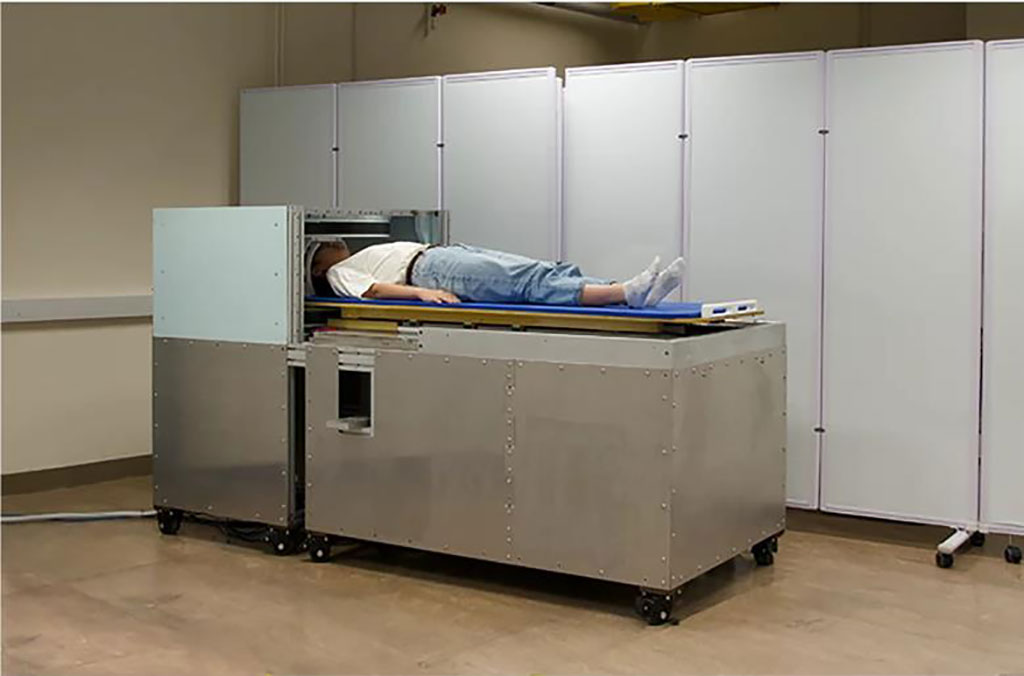New MRI Scanner Meets Third World Needs
By MedImaging International staff writers
Posted on 27 Dec 2021
An ultra-low magnetic field (ULF) MRI scanner has the potential to meet clinical point of care (POC) needs in low and middle income countries.Posted on 27 Dec 2021
Developed at the University of Hong Kong (HKU; China), the ULF MRI scanner uses a permanent 0.055 Tesla Samarium-cobalt magnet and deep learning (DL) algorithms for cancellation of electromagnetic interference, and as a result requires neither magnetic nor radiofrequency (RF) shielding cages. The compact, mobile scanner is intended for brain scanning, powered via a standard AC power outlet, is also and acoustically quiet during scanning. According to the HKU developers, it can be constructed for less than USD 20,000.

Image: The prototype ULF MRI brain scanner (Photo courtesy of HKU)
To test its capabilities, they implemented four standard clinical neuroimaging protocols (T1- and T2-weighted, fluid-attenuated inversion recovery like, and diffusion-weighted imaging) on 25 patients, successfully demonstrating preliminary feasibility in the diagnosis of brain tumors and stroke. In addition, as the system is ULF, it also has lower sensitivity to metallic implants, less susceptibility to artifacts at the air/tissue interface, and an extremely low RF specific absorption rate (SAR). The study describing the new MRI system was published on December 14, 2021, in Nature Communications.
“The high cost of procuring, siting/installing, maintaining and operating the current clinical scanners constitutes a major roadblock in MRI accessibility in healthcare,” concluded senior author professor of biomedical engineering Ed X. Wu, PhD, and colleagues. “Low-cost, low-power, compact, open, and shielding-free [ultra-low magnetic field] MRI for brain imaging, as demonstrated here, aims to complement rather than compete with existing high performance clinical MRI in healthcare.”
According to the Organization for Economic Co-operation and Development (OECD), in 2020 there were approximately 65,000 installations of MRI scanners worldwide (or approximately seven per one million inhabitants), as compared to about 200,000 CT scanners and over 1,500,000 ultrasound scanners. The distribution of MRI scanners is concentrated mainly within high income countries, with scarce availability in low and middle income countries. As a result, 70% of the world’s population has little to no access to MRI.
Related Links:
University of Hong Kong














